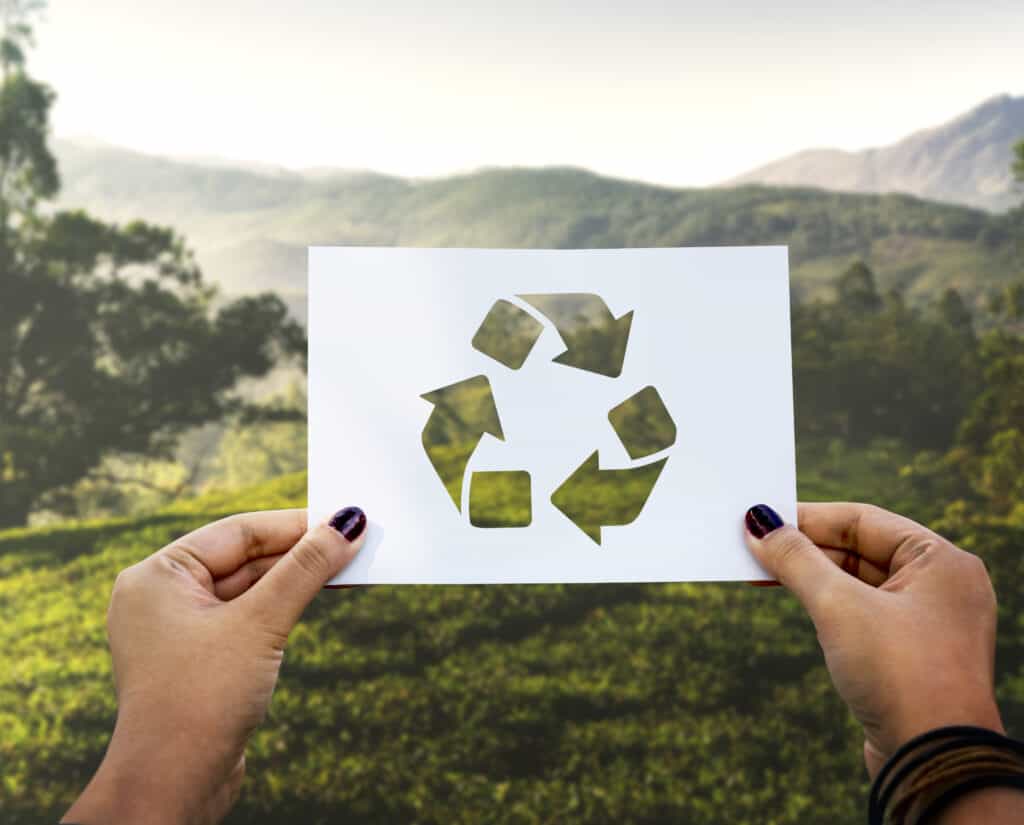- You are here:
- Home »
- Organic Bedding »
- Can You Recycle Old Pillows?
Can You Recycle Pillows?
Disclaimer: As an Amazon Associate I earn from qualifying purchases.
It’s no secret that the world is facing a recycling crisis. Plastics are choking our oceans, and mountains of waste are piling up in landfills. But there is one everyday item that many people still don’t think about recycling: pillows. Yes, those fluffy things we sleep on every night can be recycled – and should be, if we want to save our planet.
In this article, you will learn how to recycle your old pillows – and why it’s so important to do so. You will also find out where to take them for recycling and what kinds of materials they can be made into. So read on for all the information you need to start recycling your old pillows today!

What types of pillows can be recycled?
The first step in recycling your pillows is to figure out what type of pillow you have. Most pillows are made from synthetic materials like polyester or nylon, but some may also contain natural materials like cotton or wool. All of these pillow fillings can be recycled – but the process is different for each one.
Synthetic pillows: Synthetic pillows (like those made from polyester or nylon) can be recycled into a number of different things. The pillow stuffing can be used to fill new pillows, or it can be made into insulation for homes or businesses. The fabric can also be used to make carpeting, rugs, or even clothing.
Memory foam pillows: Memory foam pillows can be recycled in a number of ways, too. The foam can be used to make new furniture, carpet padding, or even soundproofing material. And the fabric cover can be turned into anything from rugs to clothing.
Cotton and Wool pillows: Natural pillows (like those made from cotton or wool) can also be recycled, but the process is a bit different. The stuffing can be used to fill new pillows, or it can be composted. The fabric can also be used to make rugs or clothing.
Natural latex pillows: Natural latex pillows can be recycled, too. The latex can be used to make new latex products (like gloves or shoes), or it can be used to make carpet padding or soundproofing material. And the fabric cover can be turned into anything from rugs to clothing.
Where can I recycle my pillows?
Now that you know what type of pillow you have, you need to figure out where to take it for recycling. If you have a synthetic pillow, your best bet is to take it to a local recycling center that accepts textiles. Many cities and towns have these centers, and they usually accept pillows for free or a small fee.
If you have a natural pillow, you can take it to a local composting center. These centers accept organic materials like food scraps and yard waste, which they then use to create nutrient-rich compost. Some composting centers also accept pillows, so be sure to call ahead and ask.
How to recycle pillows?
So, what’s the best way to recycle your old pillows? Here are some tips:
- Check with your local recycling center to see if they accept pillows. Some centers have special requirements for pillows, so it’s always best to call ahead and ask.
- While recycling completely natural and organic pillows made of organic cotton, natural latex or wool is possible, recycling synthetic pillows may be more difficult. You can get in touch with American Textile Recycling Service or other local textile recycling companies to see if they will recycle your pillow.
- Donate your old pillows to a local thrift store, charity, or animal shelter. While most thrift stores don’t accept pillows, some may be willing to take them if they’re in good condition. Some charities will gladly accept old pillows to give to people in need, and animal shelters need them to provide comfort for the animals.

How to Repurpose Your Old Pillows?
Another way to recycle your old pillows is to repurpose them. Here are some ideas:
Floor cushions
If your pillows are looking a little worse for wear but the fabric is still in decent shape, you can repurpose them as floor cushion. You can also make new pillowcases from thicker, colorful materials and use the stuffing from the old pillows.
Gardening knee pillows
If you’re someone who likes to garden, these pillows can come in handy as knee pillows. Just put them where your knees will be while you’re gardening, and they will help protect them from the hard ground.
DIY Projects
The fabric from your old pillows can be used for a variety of DIY projects. You can use it to make pot holders, stuffed animals, or even a quilt. Just get creative and see what you can come up with.
Pet bed
Your old pillows can also be turned into pet beds. You can either stitch a few old pillows together or make a pillowcase for them. Either way, your furry friend will love having their own little bed to sleep in.
Packing material
Use your old pillow stuffing to fill any gaps in boxes when you’re packing up for a move or preparing for storage. This will help keep your items safe and secure during transit.
Firestarters
The stuffing from your old pillows makes great firestarters. Just fluff up the stuffing and place it in a container near your fireplace or wood stove. When you’re ready to start a fire, just grab a handful of the stuffing and use it to help get the fire going.
Compost
If your pillows are made with natural materials, such as cotton or wool, the filling can be composted. Just make sure to remove any non-organic materials, such as metal zippers or plastic buttons, before composting.
Stuffing
The stuffing from your old pillows can be used to fluff up other pillows or beanbags. Just replace the old stuffing with the new stuffing, or add more stuffing to make the pillows or beanbags fuller.
Draft stoppers
If you have a drafty door or window, your old pillows can help to seal off the drafts. Just place them along the bottom of the door or window and they will help to keep the cold air out.

What to take into consideration when recycling pillows
Before recycling your pillows, there are a few things you should take into consideration:
- Pillows can be recycled, but there are a few things you need to take into consideration first.
- Before recycling your pillows, ensure they are clean and free of stains or dirt.
- You can donate your pillows to local charities or thrift stores if they are still in good condition.
- Pillows beyond repair can be recycled through special programs that turn them into insulation or other materials.
- If you’re unsure how to recycle your pillows, contact your local recycling center for more information.
Read More: Best Tips for Donating Old Sheets and Towels
What are the benefits of recycling pillows?
Recycling old pillows is a great way to help the environment. Not only will you save resources, but you’ll also keep pillows out of landfills. Plus, recycling pillows can save you money!
Here are some benefits of recycling pillows:
- Saves Resources: Making a new pillow takes a lot of resources. For example, the cotton for one pillow requires over 700 gallons of water to produce. Recycling old pillows instead of buying new ones helps to conserve resources
- Saves Money: A new pillow can cost anywhere from $20 to $100. By recycling your old pillows, you can save a lot of money. For example, you can use the stuffing from old pillows to fill up new pillowcases or use it as throw pillow stuffing.
- Keeps Pillows Out of Landfills: Every year, millions of old pillows end up in landfills. Not only does this take up valuable space, but it also releases harmful chemicals into the environment. Recycling your old pillows helps to reduce this problem.
- Helps the Environment: Recycling anything helps the environment. When you recycle pillows, you’re helping to reduce pollution and conserve resources. So not only will you be saving money, but you’ll also be doing your part to help the planet!
How Often Should You Replace Your Pillows?
According to experts, you should replace your pillows every 1-2 years. This is because pillows can collect dust mites, dead skin cells, and other allergens over time. If you have allergies or asthma, keeping your pillows clean and replacing them regularly is especially important.
Pillows may develop flat spots or become lumpy over time. If this happens, it’s time to replace them. You should also replace your pillows if they are stained or damaged.
When shopping for new pillows, look for ones that are made with natural materials such as cotton or wool. These materials are less likely to cause allergies and are more durable than synthetic materials.
Read More: Top 15 Organic Pillows for Sleeping
Conclusion: Are Pillows Recyclable?
Recycling old pillows is a great way to reduce waste and give your old pillows a new life. Just be sure to remove the pillowcase and any other non-recyclable materials before taking them to the recycling center.
And don’t forget to check with your local facility to see if they have any special requirements for old pillow recycling!
About the Author Kamila Flieger
My name is Kamila, and I'm passionate about researching non-toxic, organic products for the home. I believe it's so important to create a safe and healthy environment for our families, and I enjoy helping others do the same.

